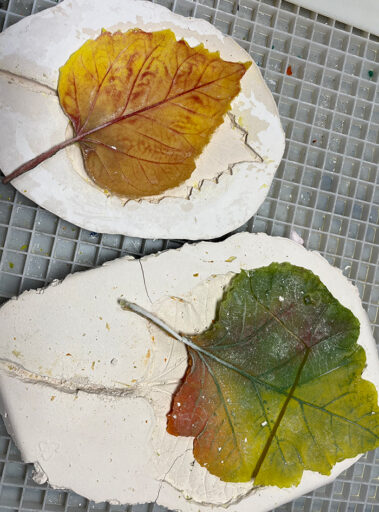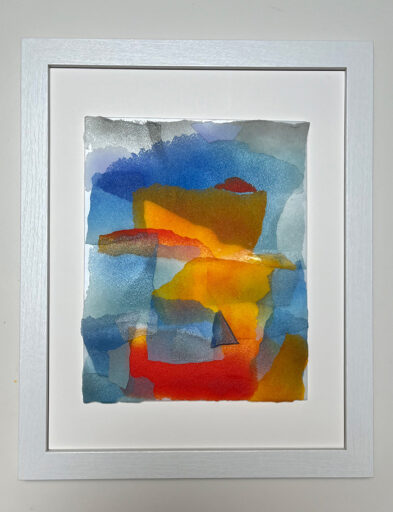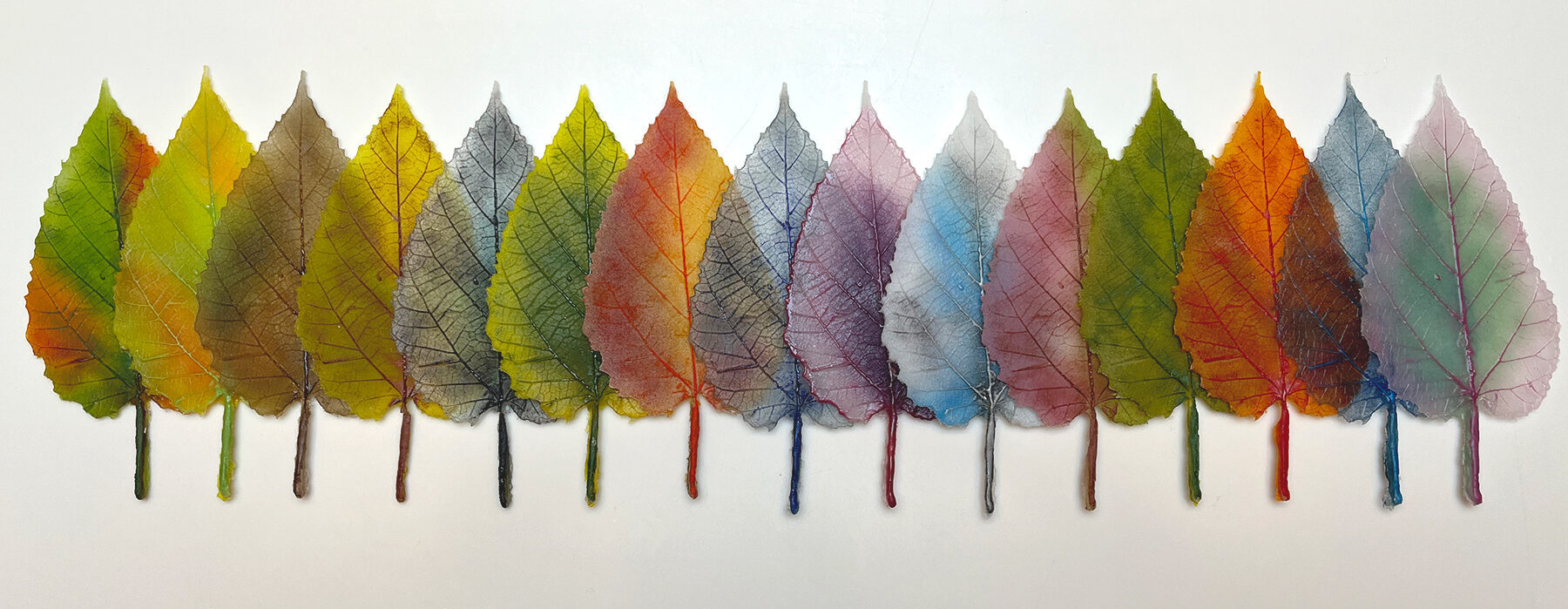Low- and high-temperature processes are used to achieve different effects in glass design.



About the process
Pate de verre leaves
An open face plaster mold of a live leaf specimen is created. Glass sheet is ground into powder. The powder comes in an almost infinite variety of colors. Powders can be combined to create custom colors. The colored glass powder is sifted carefully across the mold, paying close attention to leaf veins, details and structure. The glass powder is then fired (heated in a kiln) to approximately 1225° F for about 30 minutes. This low-fire process binds the powders together and provides enough strength that the leaves an then be further heated and combined in other projects.
About the process
Murrini
Murrini production first appeared in the Middle East more than 4,000 years ago and was revived by Venetian glassmakers on Murano in the early 16th century. Once murrini have been made, they can be incorporated into a glass vessel or sculpture in several ways.
In the modern murrini process, pieces of glass are assembled in a crucible with a hole or shaped opening in the bottom, and heated to more than 1520° F. Once the glass becomes hot enough it will start to flow through the hole in the bottom of the crucible. The glass artist must pull gently on the glass to form canes. The canes are chopped to various sizes and used in projects.
About the process
Powder wafer construction
Colored glass powders are sifted onto a kiln shelf and fired (heated in a kiln) to approximately 1285° F for about 20 minutes, then crash cooled. The result it paper thin translucent color fields that can be broken, assembled and rearranged as design components or used to create a complete image. The powder wafers are placed on a sheet of glass and refired, adhering the wafers permanently to the base glass, providing strength and a method to display the composition.
